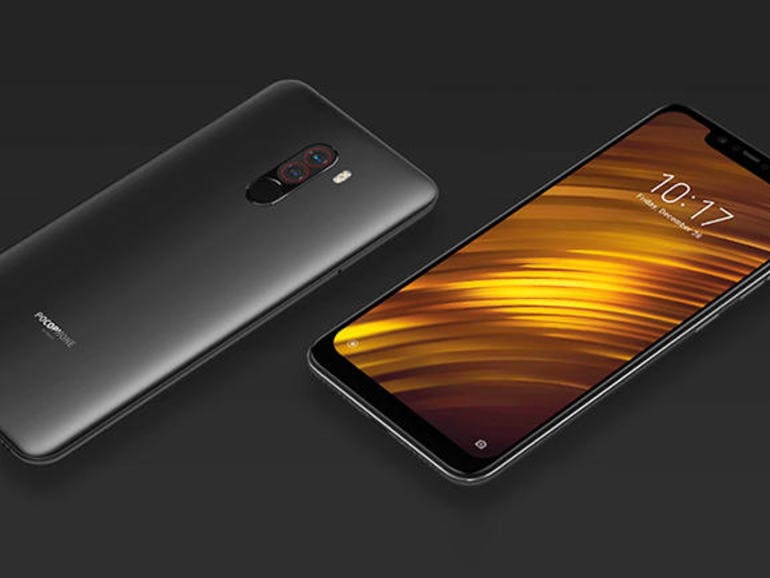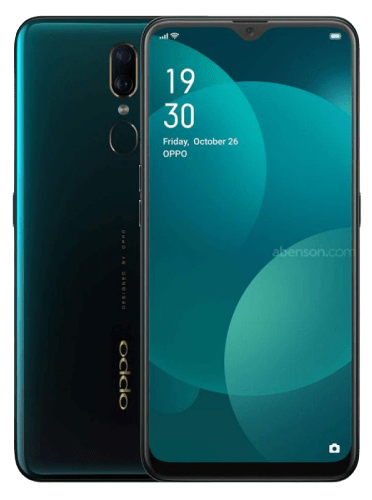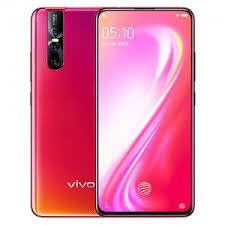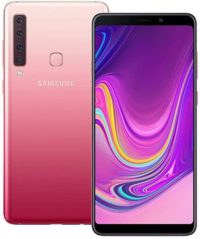
Xiaomi is a brand that knows what they’re doing. They’re becoming more and more popular across the island, which is why you’re interested in the F1. It’s a good phone, but is it worth your time? Let’s talk about this below.





Quick Navigation
Expect to dish out a bit. The phone’s a mid-ranger on the higher end of the price spectrum.
The phone’s plastic. You might not guess this, though. It comes with a metallic finish that certainly deceived us.
In your hand, you’ll realize that the Xiaomi device is pretty sturdy. This is exactly what you want as the heavier a phone is, the more expensive it feels. The F1 is a 180-gram device.
How do you feel about large devices? The F1’s gigantic, coming with a 6.18-inch display. It’s pretty slim too, rocking 155.5 x 75.3 x 8.8 mm dimensions.
Although it’s made from polycarbonate, there’s a variant with a Kevlar rear. It’s seriously durable, you won’t ever worry about dropping it.
We found the phone ergonomic. It comfortably fit into our hands and didn’t have any sharp edges. Its buttons are easy to reach too. This is especially true for its fingerprint sensor, which some phones don’t seem to place properly.
If you’re thinking of purchasing the device, there’s a couple of colours to choose from. If you’re expecting the rainbow, get ready to be disappointed. You can only get it in black, blue, red and the armoured Kevlar edition, which is grey-toned.
Speaking of the Kevlar variant, it looks a lot like the Motorolla Droid RAZR. The Kevlar body only comes in the F1’s 8 gigs of RAM, 256 GB storage variant.
Looking at its sides, you’ll see a headphone jack. We’re glad that it’s not removed. You get a microSD slot as well.
As it has a 6.18-inch display, you get an immersive viewing experience.
The panel on its screen is an IPS LCD. Colours are vivid but are not as good as an OLED. Considering that the phone’s not the cheapest, this is something to consider.
Something that sticks out like a sore thumb is its notch. It’s massive. We know that not a lot of users are fans of this. The phone doesn’t come with much bezel, though, giving it an 82.2% screen to body ratio.
The phone’s pretty detailed too. It has a 1080 x 2246 pixel screen resolution, making it pin sharp. We’re total fans.
What else are we fans of? The Gorilla Glass on its front. The F1 is durable, but we do have a complaint. Xiaomi hasn’t made public which version of Gorilla Glass the Pocophone rocks.
We have another complaint. The device’s display can get quite oily.
Not to rain on Xiaomi’s parade, but we have yet another complaint. The F1 isn’t that bright. Sri Lanka’s very sunny, so you need a phone that can combat the glare. This might not be the Pocophone as its display only comes with 461 maximum nits.

You’re getting a large 4000 mAh battery. No, it isn’t removable. Most batteries these days aren’t. As the battery isn’t small and the phone doesn’t have the most taxing screen, it can last a while. Two days of run-time is possible.
You get fast charging too. The F1 comes with an 18 W fast charger that takes the phone 2 hours to fully charge.
If you’re wondering what type of port you’ll be charging with, it’s a USB-C.
The Pocophone comes with the Snapdragon 845, making it incredibly snappy. Gaming is especially easy. Lag is something you’ll never worry about.
The F1’s memory variants are very good. You can choose from 64, 128, and 256 GB of space. 256 GB should be more than enough for you. If it isn’t, remember that the phone comes with a MicroSD slot.
RAM wise, the device is exceptionally great. You can choose from 6 or 8 gigs. The 8 gig variant is a dream to work with.
What version of Android does it run? You’re getting Android 8.1 out of the box. The phone can be upgraded to Android 10.
Compared to aspects like battery and performance, the phone’s camera doesn’t perform as well. You get a dual-camera set-up that sounds nice, with a 12 MP primary sensor and a 5 MP depth sensor. However, it does horribly in low light. If you’re in settings with varying degrees of light intensity, it’ll struggle too.
If the room’s lit up evenly, you’re going to get some detailed, colour accurate shots. However, spaces that are lit up evenly aren’t as common as you think.
Front camera-wise, the same things apply. The F1 comes with a 20 MP front shooter that performs brilliantly in well-lit settings.
At this point, it’s clear that Xiaomi is a brand worth your time. The Pocophone F1 is a great device, but this review wouldn’t be complete if we didn’t compare it with a few alternatives. Let’s do this below.
The Oppo F11 is a good-looking phone. It comes with a gradient that we’re fans of.
The phone feels well built. It’s a pretty hefty device, being 8 grams heavier than the F1. It’s still made from plastic, though.
You’re not only getting a heavier phone but also a larger one. The F11 is a 6.53-inch device, towering over its Pocophone counterpart. As it’s so big, you get a more immersive viewing experience. This is especially true as the phone barely has any bezels. It boasts of an 85.3% screen to body ratio.

Remember how we said the notch on the F1 was huge? There’s barely one on the Oppo device.
It’s a gift that keeps on giving as you’re getting a better screen resolution. The F11 is much sharper, coming in at 1080 x 2340 pixels.
The F1 wasn’t that bright. Unfortunately, its Oppo counterpart isn’t as bright either. It comes with a 440 maximum nit screen. Keep this in mind.
You’re met with an LCD screen again. It isn’t just any LCD. The Oppo device comes with an LPTS IPS LCD panel. It’s sharper than regular LCDs
Performance-wise, things look different. The F11 comes with the Mediatek Helio P70 inside. Compared to its Pocophone counterpart, its processor doesn’t do that well.
You don’t get as many memory variants either. You can only choose from 64 or 128 GBs of space. Yes, its storage can be expanded. RAM wise, you can choose from 4 or 6 gigs. We would’ve loved it if the device came with an 8 GB RAM option like the F1.
You’re getting a slightly larger battery. The phones last about the same time, but what’s noteworthy is the fact that the F11 comes with a better fast charger. A 20 W charger is by your side, taking the phone around an hour and a half to go from 0-100%.
What about its camera? There’s a dual set-up for you to play with. The primary sensor is 48 MPs, having a 5 MP secondary depth sensor. Front camera-wise, a 20 MP shooter is present.
Seriously, look at its back. It has a rainbow effect that’s mesmerizing. The placement of its camera is unique too. The S1 Pro will turn heads.
Unlike the F1, the Vivo phone comes with a glass back and aluminum frame. It just oozes luxury. It’s no surprise that it’s heavier than its Pocophone counterpart. The device is 186.7 grams. It’s larger by a bit too.
Overall, you’re getting less bezel. The phone has an 83.4% screen to body ratio. The phone’s display is sharper as well. A 1080 x 2340-pixel screen resolution is by your side.

So far so good, but get ready for some bad news. We have no idea how bright the phone is. Vivo hasn’t specified its maximum nits.
In other news, an IPS LCD screen is present. You already know how we feel about this.
Things don’t look good when we examine its processor. The F1 eats the S1 Pro alive. The Pro comes with the Snapdragon 665, which is no match to the 845.
The phone doesn’t come with a range of memory variants. You only get 128 gigs of space and 8 GBs of RAM. 128 GBs should be more than enough for you. If not, know the phone comes with a MicroSD slot.
Battery-wise, the S1 Pro is a beast. It has a 4500 mAh battery that can outlast its Pocophone counterpart. What about its charger? An 18 W fast charger is by your side. Both phones take 2 hours to go from 0-100%.
Let’s talk about its camera. You’re getting a quad set up. The primary sensor is 48 MPs. The secondary sensor is an 8 MP ultrawide one, the tertiary sensor is a 2 MP macro lens and the final sensor is a 2 MP depth sensor. In the front, you get a 32 MP shooter like the F1.
The A9 is a big phone. It’s larger than the Pocophone, being 6.3 inches. Unlike its counterpart, it comes with a glass body. There’s Gorilla Glass 5 on its rear, making it very durable. The glass is on its front too, we feel secure.
Its viewing experience is vivid, to say the least. Its display rocks a Super AMOLED panel. This means colours pack a serious punch.
The phone’s as sharp as the F1. A 1080 x 2220 pixel screen resolution is by your side. The A9 comes with a similar screen to body ratio but doesn’t have a notch. Before you get excited, know that there’s bezel instead.

It rocks a 700 maximum nit display, making it much brighter than the Pocophone.
Performance-wise, the A9 doesn’t do that well. Like the S1 Pro, a Snapdragon 660 chip is by your side. The F1’s 845 eats it alive.
In terms of memory variants, they’re pretty decent. You can choose from 64 or 128 gigs of space. Along with this, 6 or 8 GBs of RAM is by your side. If you want to expand its storage, you can do this. The A9 comes with a MicroSD slot.
Did we mention what version of Android it runs? Out of the box, you’re getting Android 8. We’re not surprised that the phone can be upgraded to Android 10.
When we compare its battery to the F1’s, things don’t look that good. The Samsung device comes with a 3800 mAh unit. Although small, the phone can last over a day. Remember that its processor isn’t the most powerful.
Both phones come with 18 W fast chargers, so get a good book ready. You’ll have to wait 2 hours.
The device’s camera is really good. You’re getting double the sensors that the F1 comes with. The quad set-up’s primary sensor is 24 MPs. There’s a 10 MP secondary telephoto sensor, a tertiary 8 MP ultrawide sensor, and a fourth 5 MP depth sensor. Front camera wise, you get a single set up. There’s a 24 MP camera for you to play with.
The Pocophone F1 is a phone that’s worth your time. It delivers when it comes battery and processor, does decently display wise but is kind of lack-luster in terms of its camera. When compared with alternatives, it’s clear that it holds its own but they outperform it in certain aspects.
Overall, none of them could beat it in terms of processor. Xiaomi outdid themselves with the Snapdragon 845.
Poco F1's legacy as the best budget phone with flagship specs still remains. This was evidenced by the fact the Poco F2 and X2 failed to live up to the hype set by their predecessor. The F1 even received the MiUI 12 update. However, most of the F1s specs, while not outdated, have been surpassed by newer, better priced phones.
Did you enjoy our Pocophone review? If you did, you’ll love our Facebook page! We regularly update it with all kinds of content.